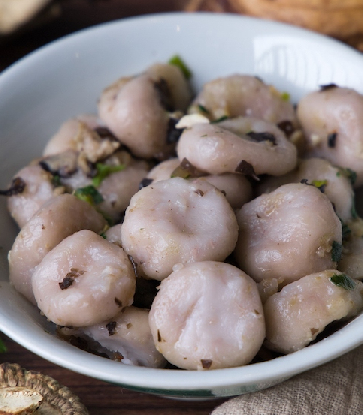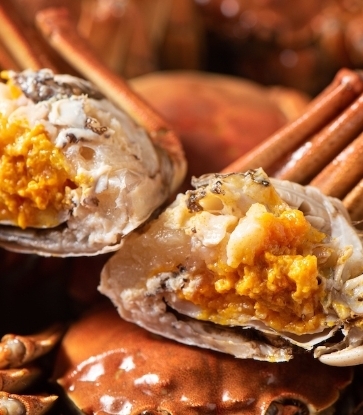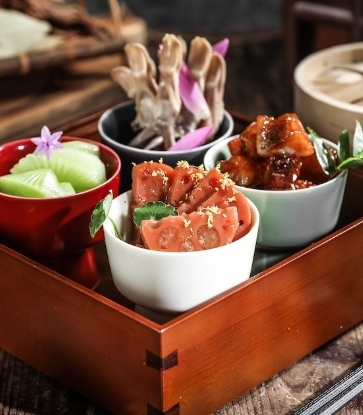Poaching is a cooking method frequently applied in our daily cooking where ingredients are boiled in water or broth over a short period of time resulting in a soupy dish. This is where things get a bit tricky for some people, who have trouble distinguishing poaching from stewing, or even blanching or stir-frying. In reality, these cooking techniques are worlds apart.

“Poaching and stewing are both about cooking ingredients in a kind of broth or sauce, but the cooking time and level of heat required by the two methods are vastly different. Normally, it takes about 15 to 30 minutes over high or medium heat to poach something. You might need to give it a stir occasionally before the ingredients are cooked and served with the sauce. Stewing is conducted under low heat. The whole process is at least an hour and a half long, as the ingredients are gradually cooked and tenderised, absorbing the rich sauce that goes with it,” explains Lai Ching Shing, Chinese executive chef of MICHELIN Plate restaurant Yue in Hong Kong.
If anything, many Chinese restaurants are guilty of causing more ambiguity behind poaching, misusing the word “stew” for what should be poached dishes on the menu.
Dishes like pumpkin, garlic and fermented black bean stew as well as chestnut and chicken stew, are cooked under 30 minutes leaving a thick, reduced sauce in the pot. Technically, they should be called poached pumpkin with garlic and fermented black bean, and boiled chicken with chestnut.
Lai elaborates that the practice of poaching dishes was popularised in the 1960s and 1970s. Limited to an austere lifestyle with few resources at hand, Hong Kong people at that time came up with some scrappy tactics to fill their belly. Poverty-stricken housewives who had to make do with a low stock of grocery relied on the likes of fermented black bean, fermented bean sauce and chu hou paste in their pantry. They took advantage of these strong-tasting condiments to whip up flavourful dishes quickly and easily. The diet might be meagre, but the rich sauces on rice were good enough to get families through the tough days.

Distinctive Styles
The sauce, or broth in some cases, is the backbone of poaching. Unlike stir-fries, where you would find thickened sauces added at the end to season an already cooked dish, in poaching, the sauce is cooked together with the ingredients.
“Bitter melon and beef is a combination that can be poached or stir-fried. In a stir-fry, both are fried in a wok with fermented black bean first before adding the thick seasoning sauce and letting it reduce. The sauce ends up sticking to the produce. The bitter melon is still crisp. But with boiling, stock is added to sautéed bitter melon and fermented black bean to soften them. Par-fried beef is put in afterwards. The bitter melon soaks up loads of the stock. Its soft texture is drastically different from the stir-fried version,” Lai points out.

When it comes to cooking noodles, different noodle dishes call for different poaching liquids. “To make wonton noodles, the noodles are cooked in boiling water in the beginning. The flounder stock and wonton are added after that. Other types of noodles, like something as simple as instant noodles, are boiled with a flavoured stock, so the noodles would pick up the taste of the stock while they’re cooking,” Lai says.

Cooking Rice
As it turns out, cooking rice — something most Chinese families do every day without thinking — is a form of poaching. “When rice cookers were yet to be invented, an average family would use a wok to make rice. Rice and water are boiled together and stirred. When the water reaches a gentle boil, the heat is turned down to let the rice cook,” Lai says. He also explains how it differs from cooking clay pot rice. “We don’t stir it when we’re making clay pot rice. But that is necessary to stir rice in a wok. Otherwise the rice would stick to the bottom and burn.”
Lai adds that rice cooked in a wok is less starchy, which makes even better fried rice than rice refrigerated overnight. His fried rice recipe employs rice that is first boiled, then steamed. The rice is cooked in a wok with hot water. Once it gets to a gentle boil, the mixture is transferred to a steam oven until fully cooked. This is the secret weapon for Lai’s signature fried rice that boasts dry, loose grains.
So in conclusion, what ingredients are best suited for poaching? The chef answers: “Avoid tough produce or those that don’t soften up easily. Fish, beef, pork ribs, chicken and melons all work well with boiling. Cut your ingredients into slices or one-inch dices for them to cook and absorb other flavours more easily.”






















